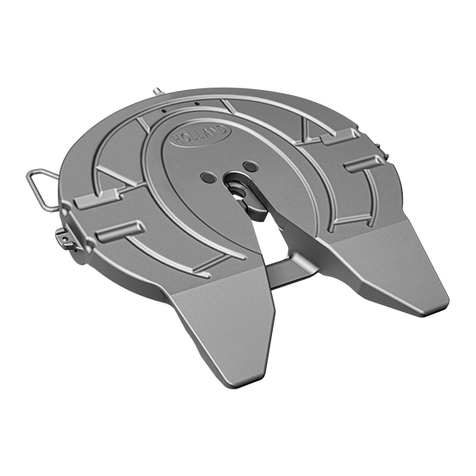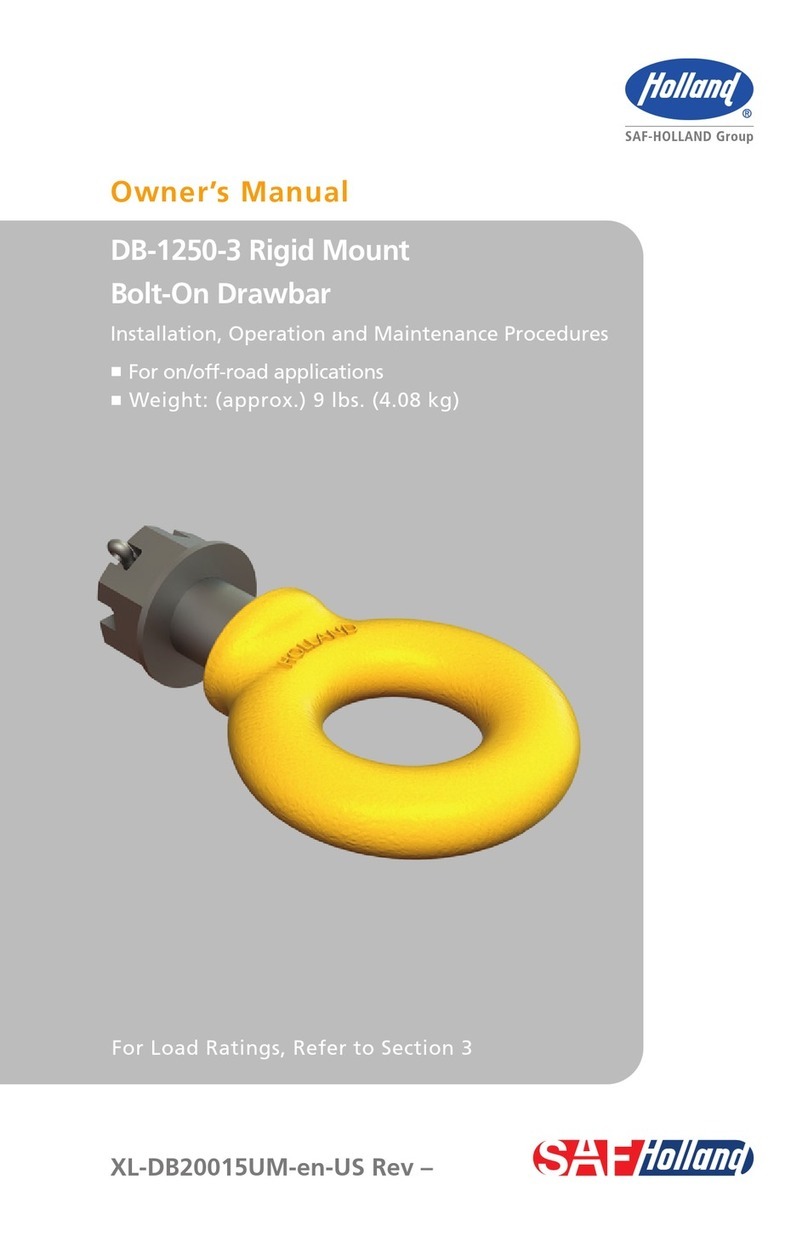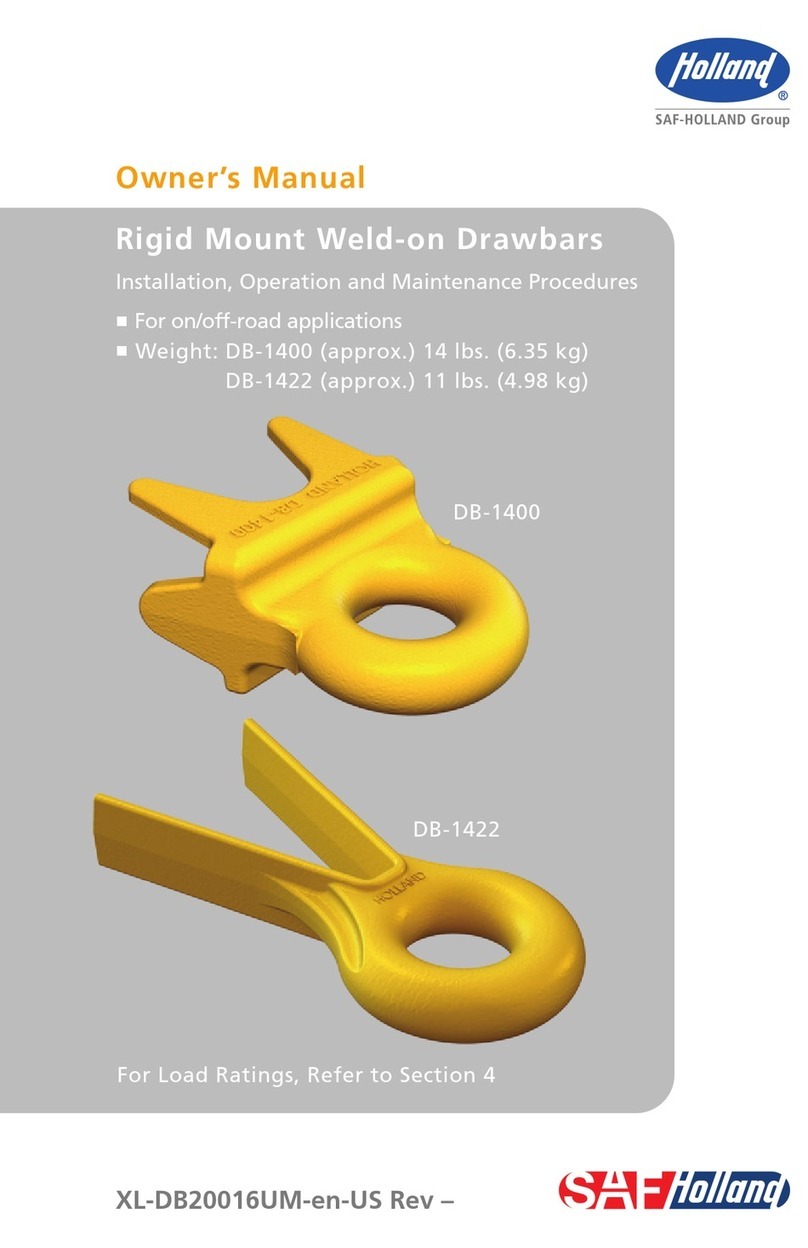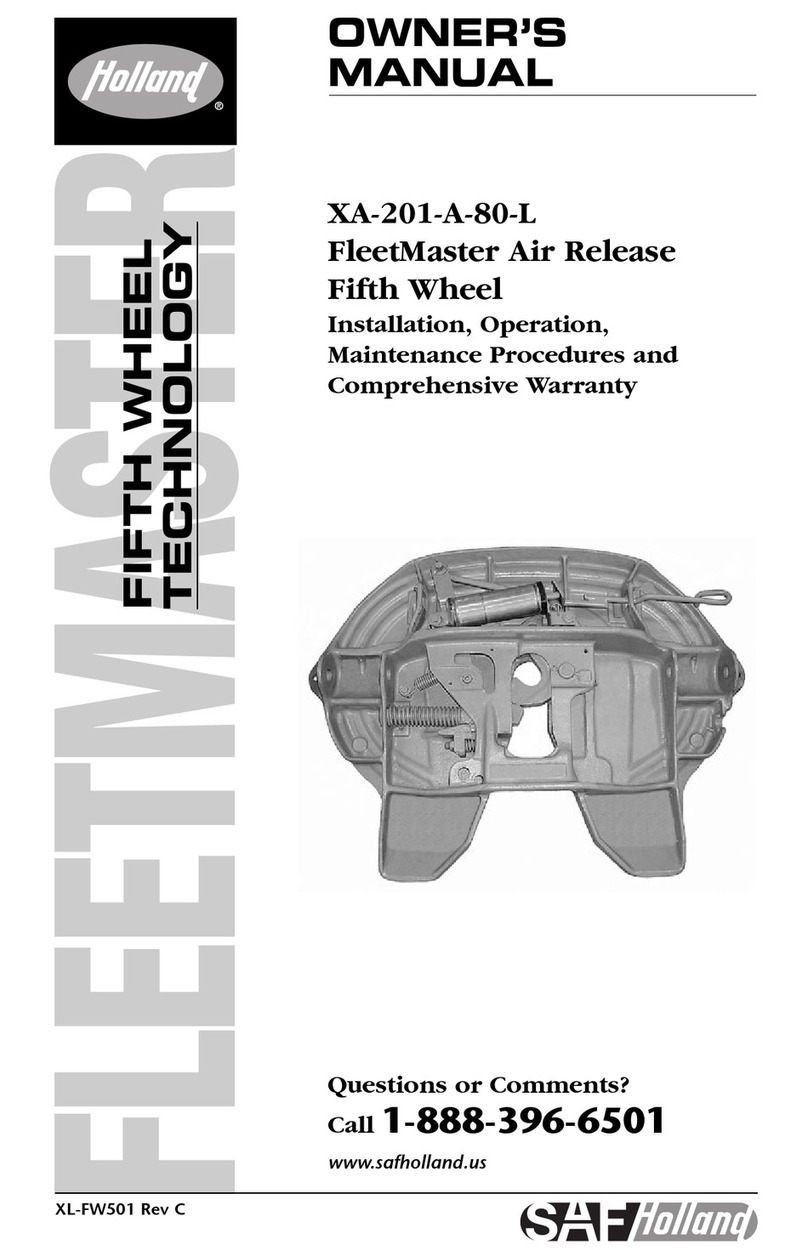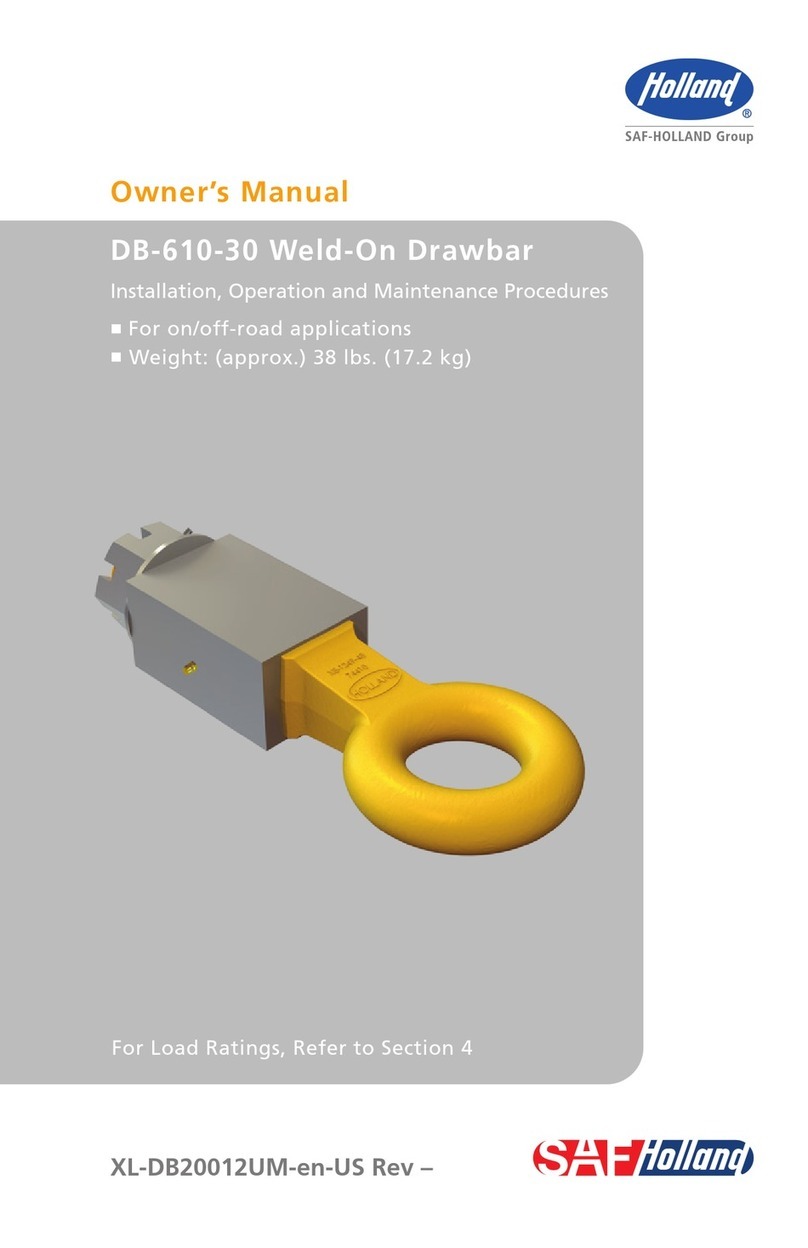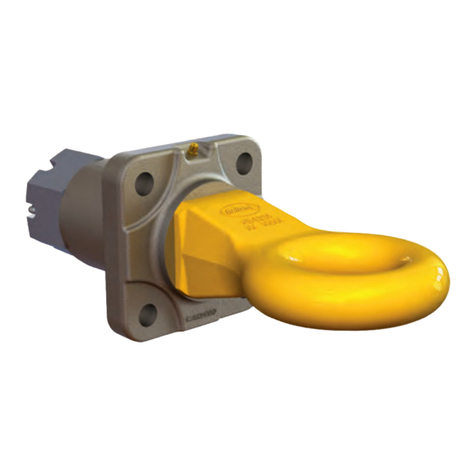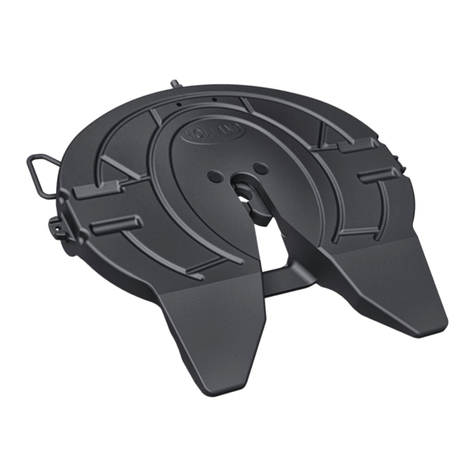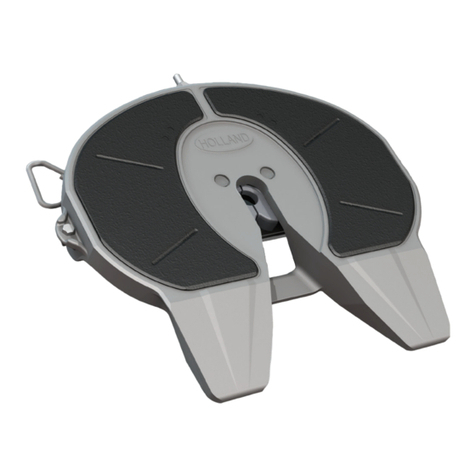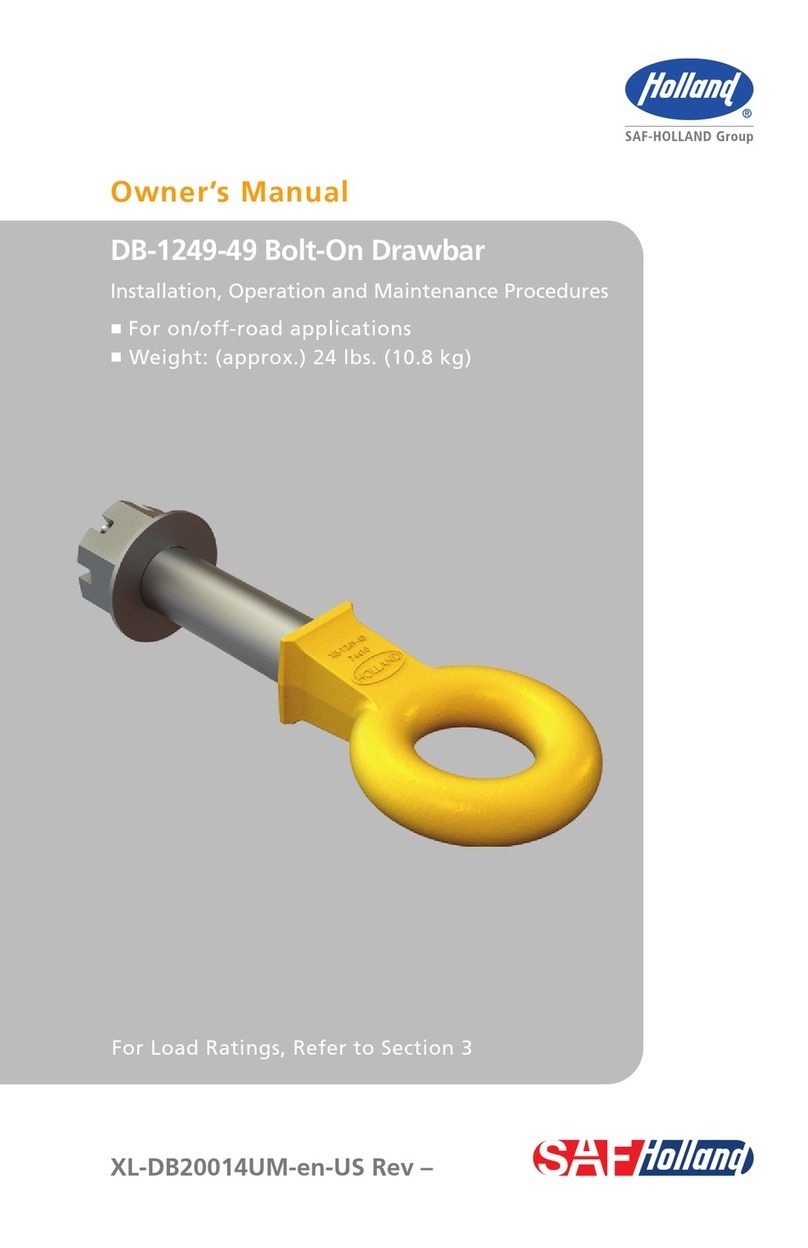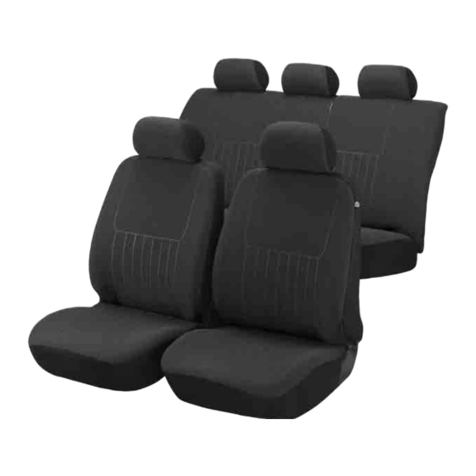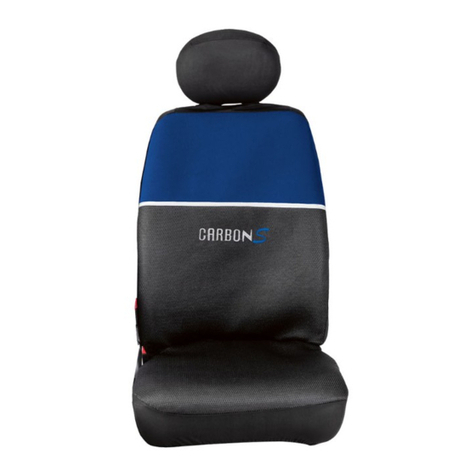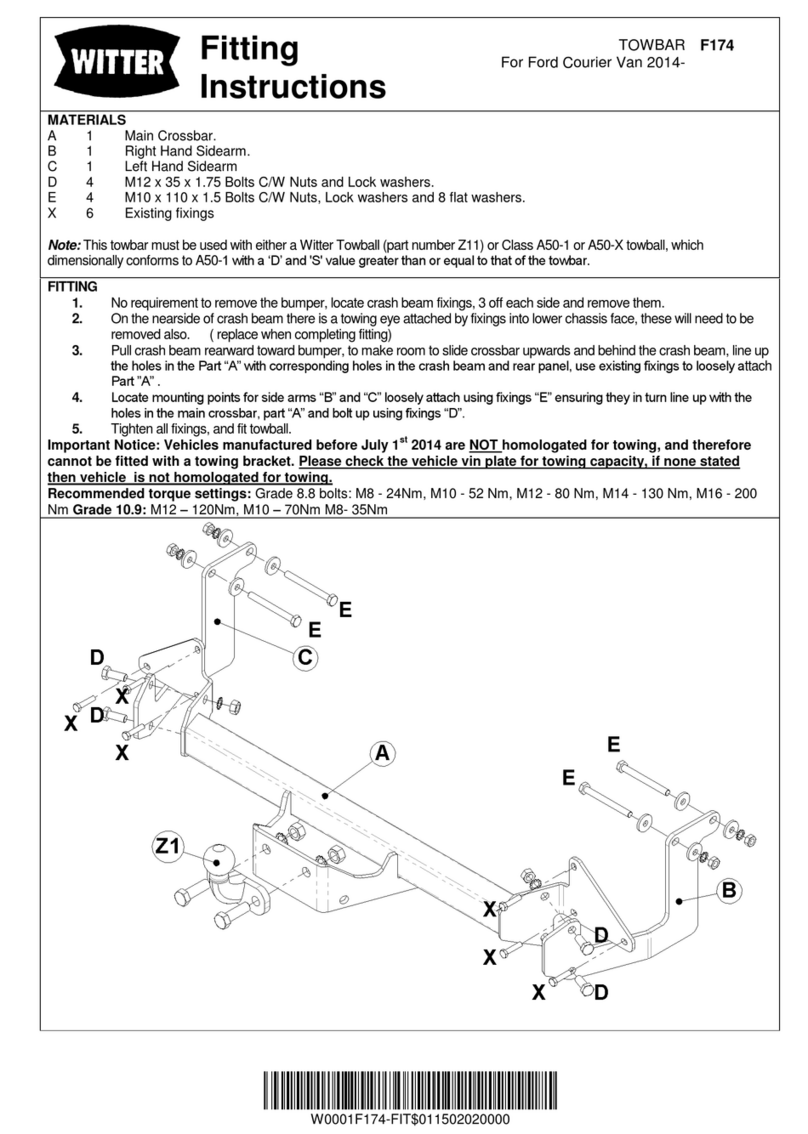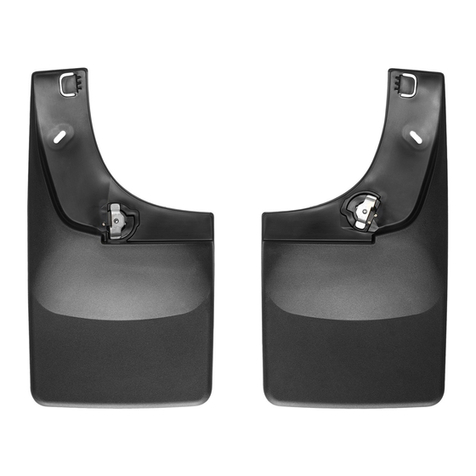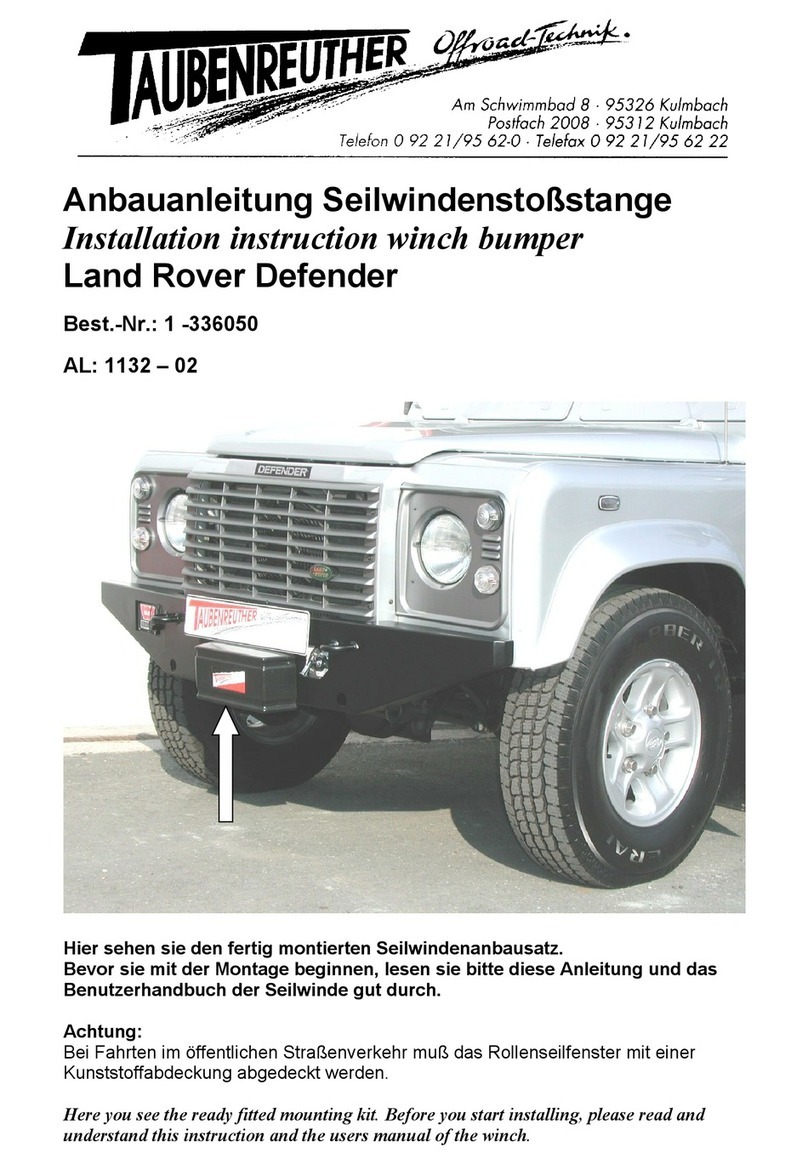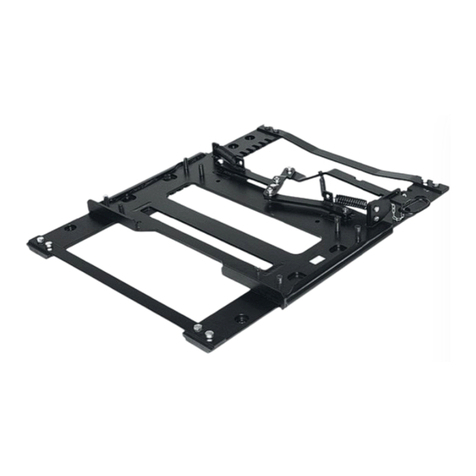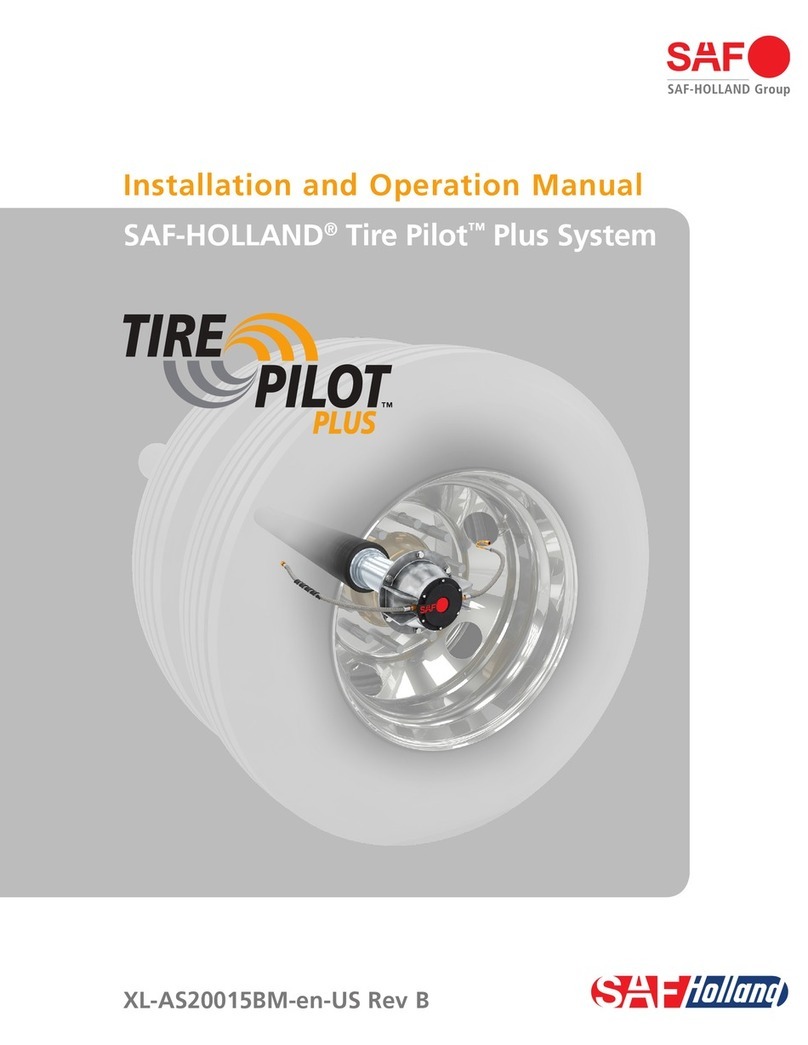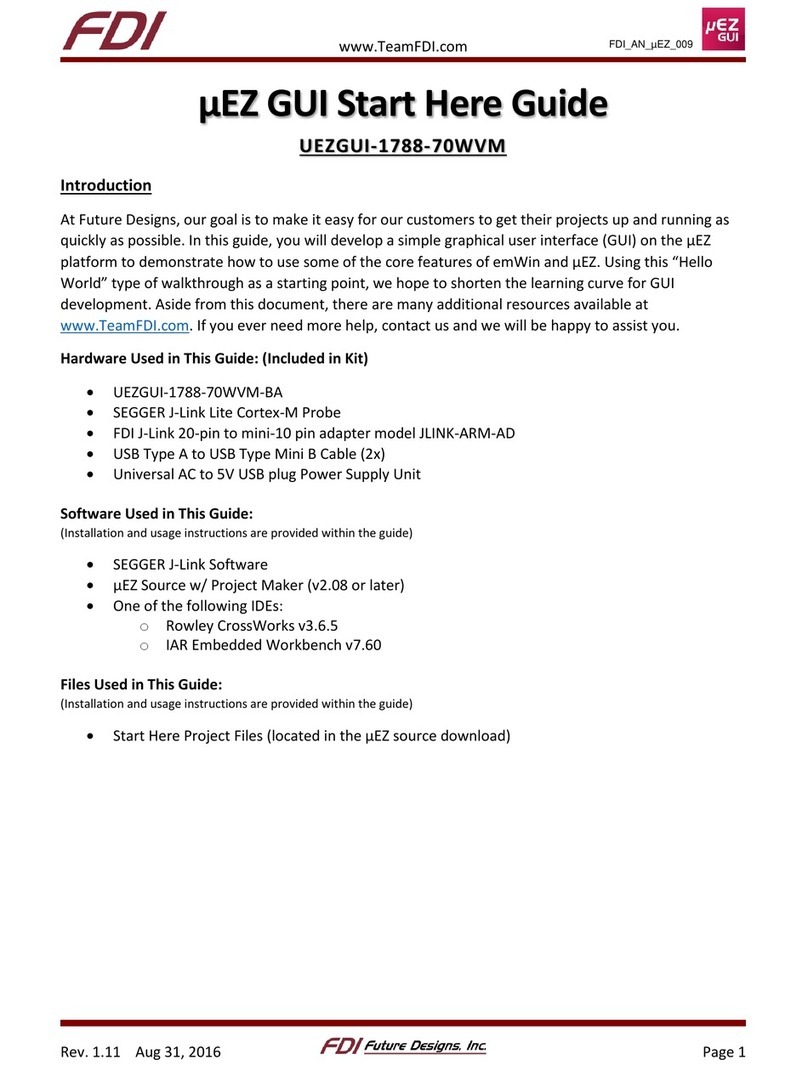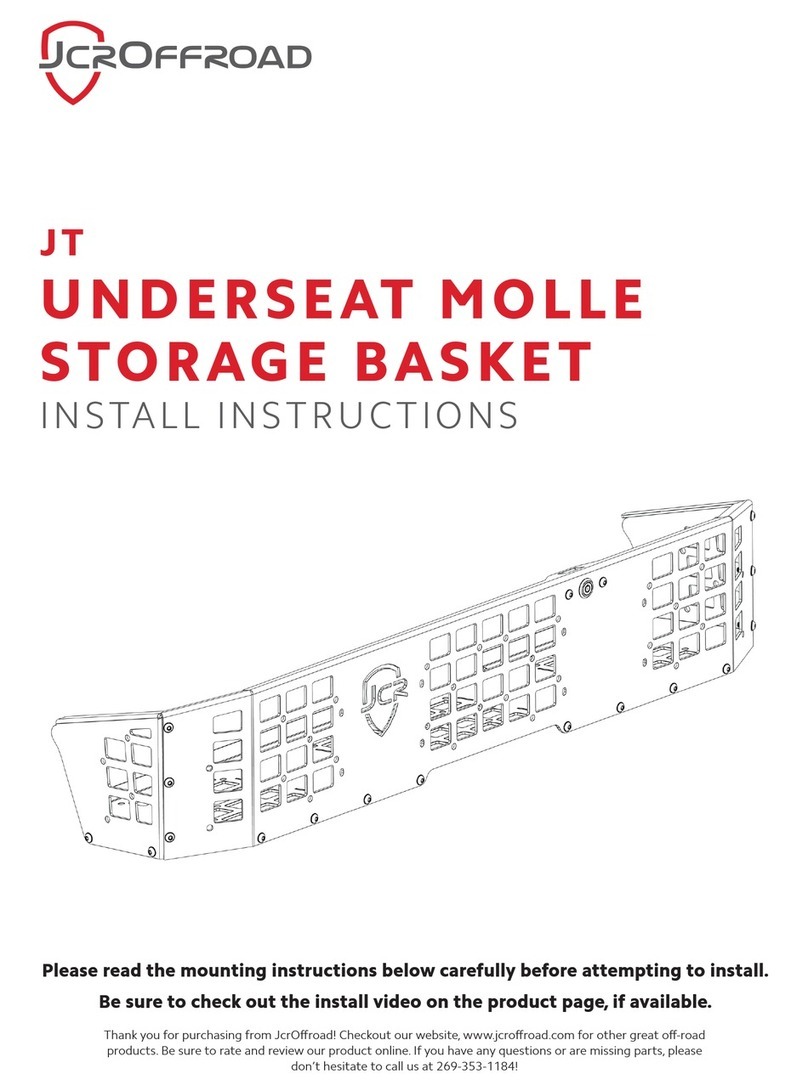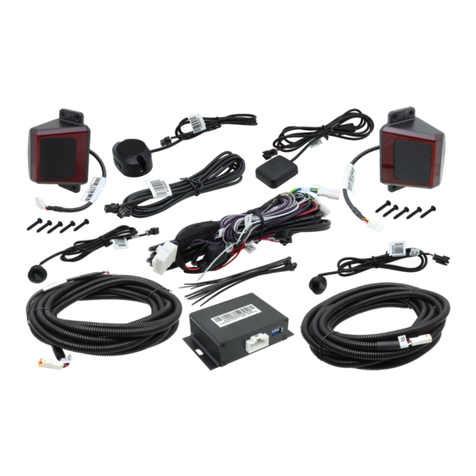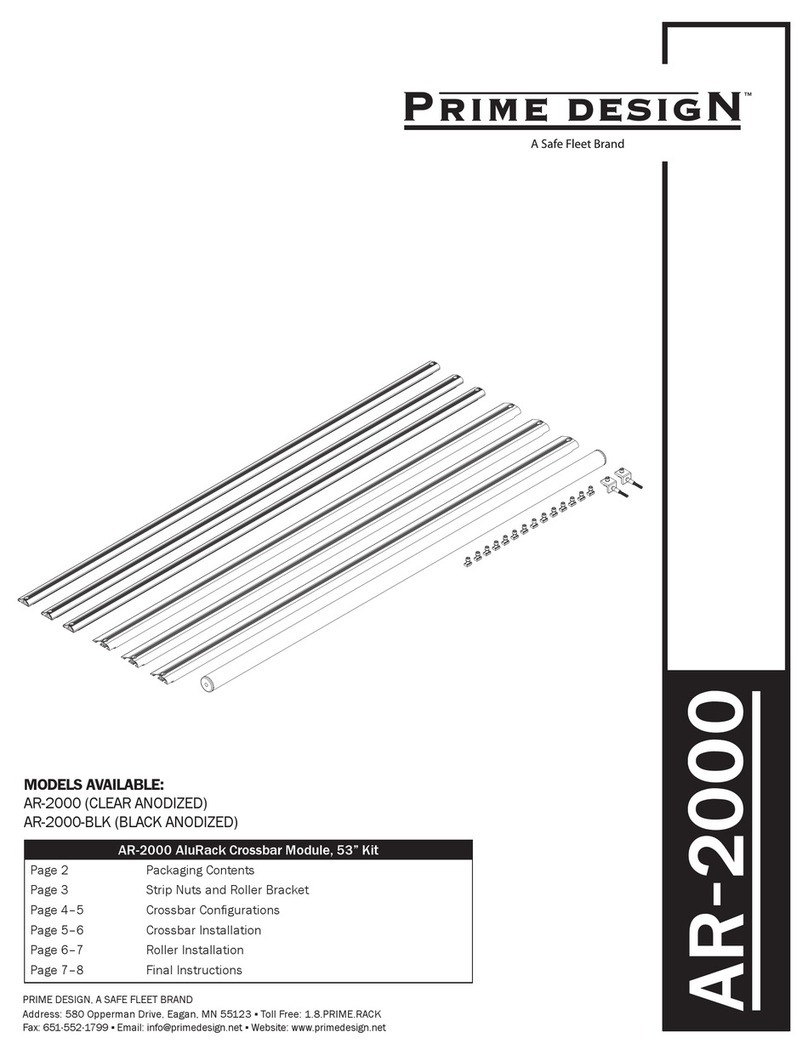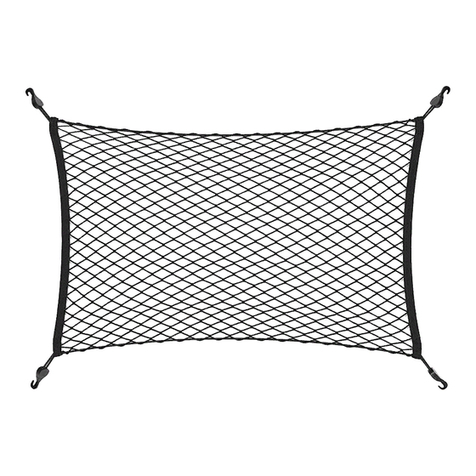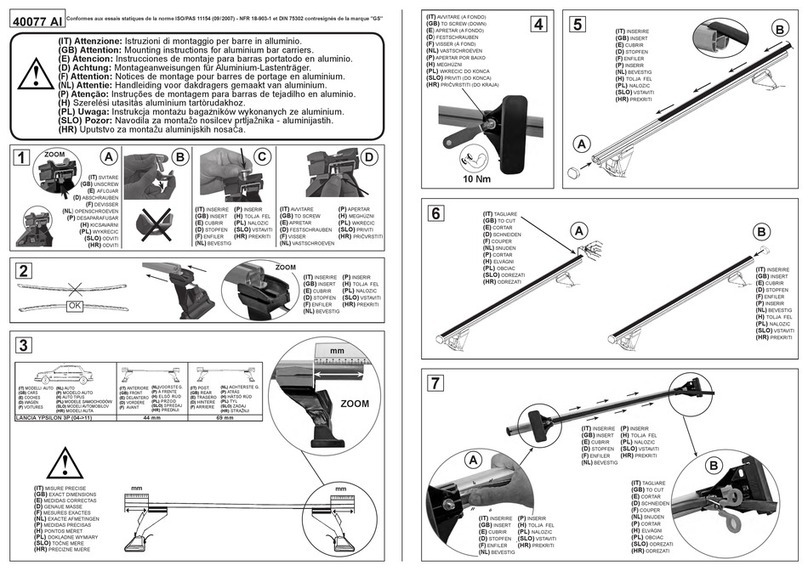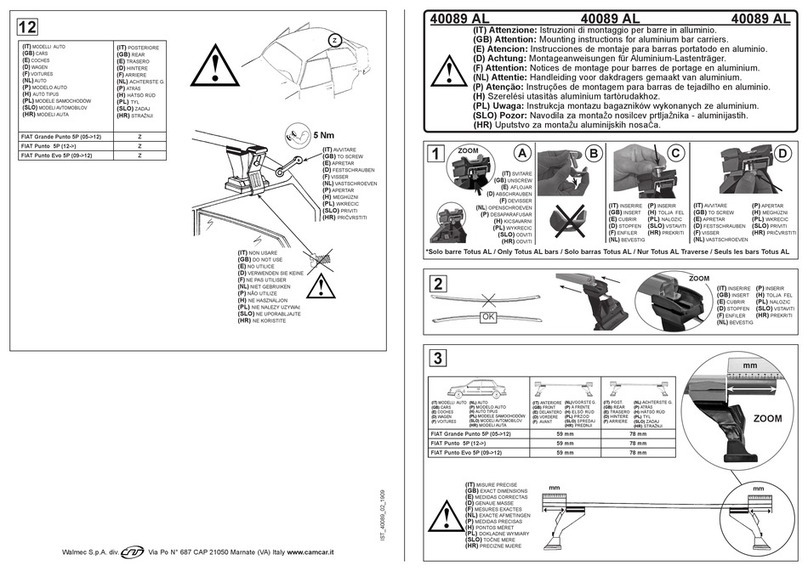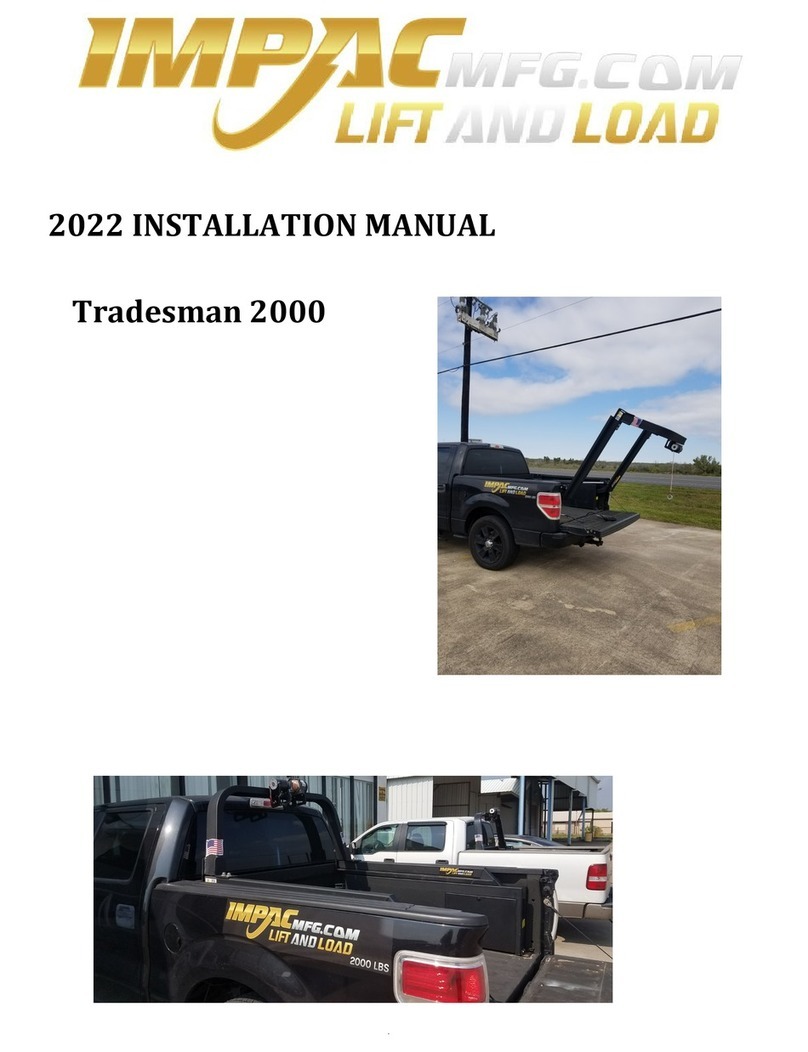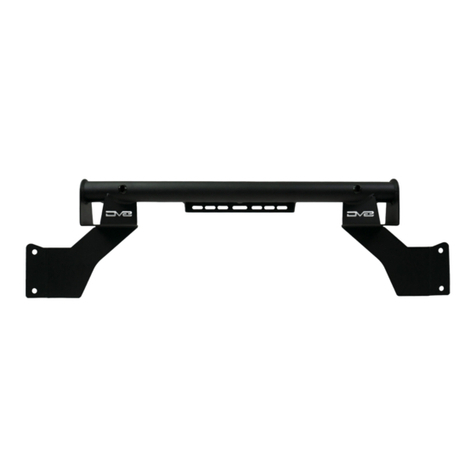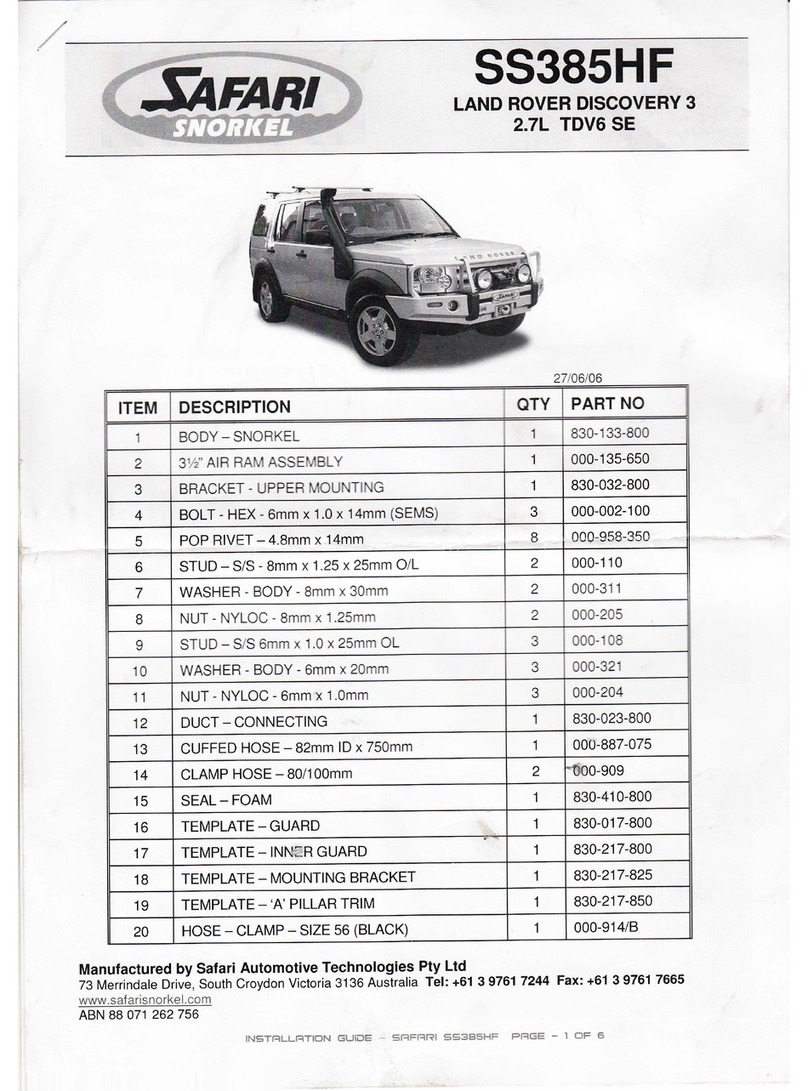
XL-FW503 Rev B 3
INSTALLATION INSTRUCTIONS
continued
Installation
General Recommendations
1. Every user and installer using SAF-HOLLAND products either recommended or not
recommended by SAF-HOLLAND,must thoroughly satisfy himself that the installation
procedure used is appropriate for the vehicle, product and application.
2. Consult the SAF-HOLLAND literature for fifth wheel capacities and applications.
3. Consult the tractor manufacturer’s body builder’s book and the latest SAE and D.O.T.
standards for additional installation methods. SAF-HOLLAND recommends the T.M.C.
Recommended Maintenance Practice 603B for installation procedures.
4. Determine the proper fifth wheel position, or, in the case of a sliding fifth wheel, the range of
proper positions. Proper positioning of the fifth wheel is important for weight distribution,
swing clearance and handling characteristics. See SAE J701a for proper placement, as well as
the tractor manufacturer’s body builder’s book.
5. Use Grade 8, 5/8˝ minimum diameter bolts and Grade “C” locknuts for mounting.
6. Bolt holes can be 1/32˝ larger in diameter than the bolt fastener. Bolts must be adequately
tightened using charted torque ranges in foot-pounds for the recommended Grade 8, 5/8˝
diameter bolts. Larger diameter Grade 8 bolts and coated fasteners may be used.
7. The bolts attaching the fifth wheel mounting angles to the truck frame require hardened
steel washers under both the bolt and under the locknut, unless flanged head bolts or
flanged head locknuts are employed.
8. A minimum of 5 bolts are required to attach each mounting angle to a frame rail, and the
distance between bolts must not exceed 8˝, except when cutouts are required in the
mounting angles.
9. Whenever a cutout is made on the mounting angle, such as required to bypass spring
hangers, a 1˝ minimum radius should be used and bolts should be placed within 1-1⁄2˝, but
not closer than 1˝ of the cut, fore and aft.
10. The mounting angle should have a minimum thickness as shown in Chart 1 and should be
steel specification ASTM A 36.
11. When initially positioning the fifth wheel for frame holes, the full length of the fifth wheel or
slider mounting angles should seat flush on the top and side surface of the truck-tractor
frame rails where channel-type rails
are employed. There should not be a
gap over the top of the truck frame
rails. The base of the fifth wheel
assembly and of the mounting angle
members should seat flush on the top
of the frame rail to prevent flexing
and to give uniform weight
distribution. It is also recommended
to chamfer or smooth sharp edges
and corners of mounting materials
wherever contact is made with the
tractor frame.
12. If the fifth wheel is to be mounted using a mounting plate (bracket with mounting base),
refer to CHART 1 for minimum plate thickness recommendations.
Do not use U-bolts in fifth wheel installations. Use only new Grade 8 bolts and
new Grade C lock nuts, sized 5/8˝ minimum diameter. Failure to do so may
result in structural failure of the installation with a potential loss of the fifth wheel assembly,
mounting structure, and/or trailer and may result in death or serious injury.
13. Trailer pick-up ramps are recommended at the rear of the truck-tractor frame.
14. When mounting to aluminum frames, follow the tractor manufacturer’s recommendations.
SAF-HOLLAND has available a stationary mounting angle intended for use with aluminum
frames. Contact SAF-HOLLAND or distributors of Holland brand products for availability.
15. Review, in addition, the specific information on the following pages for each type of fifth
wheel mounting, as well as “Inspection and Lubrication Prior to Use” on page 8 of this
publication.
CHART 1
Minimum Minimum
Fifth Wheel Mounting Angle Mounting Plate
Vertical Capacity Thickness Thickness
12,000 lbs. 1/4˝ 1/4˝
20,000 lbs. 5/16˝ 1/4˝
40,000/45,000 lbs. 5/16˝ 5/16˝
50,000/55,000 lbs. 3/8˝ 3/8˝
62,500/70,000 lbs. 1/2˝ 1/2˝
100,000 lbs. 3/4˝ 3/4˝
165,000 lbs. 3/4˝ 1˝
